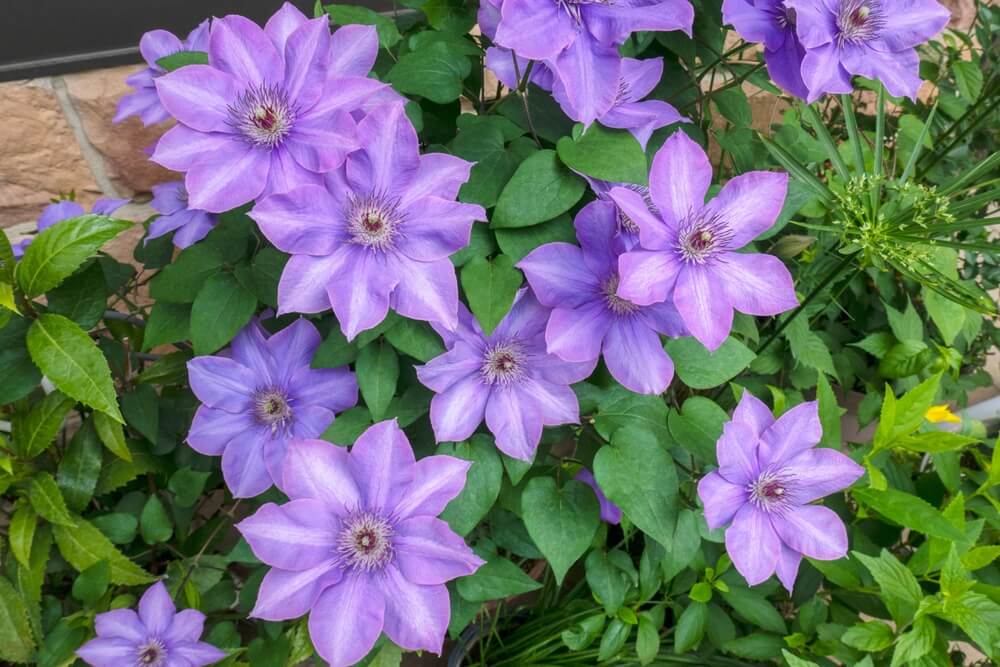Clematis Bloom Boost Guide

Clematis is one of the most popular and versatile flowering vines, offering a wide range of colors, shapes, and sizes to suit any garden design. To achieve the best bloom performance from your clematis, it's essential to provide the right growing conditions, care, and support. In this comprehensive guide, we'll delve into the world of clematis, exploring the key factors that influence blooming, and providing expert tips and advice on how to boost the bloom potential of these stunning flowers.
Understanding Clematis Bloom Types

Clematis flowers can be broadly categorized into three main groups: early-flowering, mid-season flowering, and late-flowering. Each group has its unique characteristics, growth habits, and blooming periods. Early-flowering clematis, such as ‘Montana’ and ‘alpina’, produce flowers in early spring, typically from March to May. Mid-season flowering clematis, including ‘Crystal Fountain’ and ‘Niobe’, bloom from May to July, while late-flowering clematis, like ‘Crystal Blue’ and ‘Polish Spirit’, produce flowers from July to September.
Clematis Growth Habits and Bloom Promotion
Clematis growth habits play a crucial role in determining their bloom potential. Group 1 clematis, which include early-flowering varieties, produce flowers on old wood, meaning that the previous year’s stems produce the current year’s flowers. In contrast, Group 2 clematis produce flowers on both old and new wood, while Group 3 clematis produce flowers only on new wood. Understanding these growth habits is essential for pruning and training clematis to promote optimal blooming.
| Clematis Group | Bloom Period | Growth Habit |
|---|---|---|
| Group 1 | Early Spring | Old Wood |
| Group 2 | Mid-Season | Old and New Wood |
| Group 3 | Late Summer | New Wood |

Clematis Care and Support

Providing the right care and support is vital for clematis to thrive and bloom profusely. Soil preparation is crucial, as clematis prefers well-draining, fertile soil with a pH between 6.0 and 7.0. Adding organic matter like compost or well-rotted manure will improve soil structure and fertility. Adequate watering is also essential, especially during the first year after planting. Clematis requires about 1 inch of water per week, either from rainfall or irrigation.
Clematis Pruning and Training
Pruning and training are critical components of clematis care, as they help promote healthy growth, encourage blooming, and maintain plant shape. Pruning Group 1 clematis involves removing dead or damaged stems after blooming, while pruning Group 2 clematis requires cutting back the stems to about 12 inches from the ground in late winter or early spring. Pruning Group 3 clematis involves cutting back the stems to about 3 feet from the ground after blooming.
- Prune Group 1 clematis after blooming
- Prune Group 2 clematis in late winter or early spring
- Prune Group 3 clematis after blooming
Clematis Pest and Disease Management
Clematis can be susceptible to various pests and diseases, including aphids, slugs, and powdery mildew. Regular monitoring and prompt action can help prevent infestations and infections. Using organic pest control methods, such as introducing beneficial insects or spraying with neem oil, can help minimize the risk of pest damage. Fungicides can be used to control fungal diseases, but it’s essential to follow the manufacturer’s instructions and take necessary precautions to avoid harming beneficial insects.
Clematis Bloom Boosting Tips
To boost the bloom potential of your clematis, try the following tips:
- Provide at least 6 hours of direct sunlight per day
- Water regularly, but avoid overwatering
- Fertilize with a balanced fertilizer in early spring and after pruning
- Prune regularly to promote healthy growth and encourage blooming
- Provide a sturdy support system to promote vertical growth
What is the best time to plant clematis?
+The best time to plant clematis is in the spring or fall, when the weather is cooler. This allows the plant to establish itself before the heat of summer or the cold of winter.
How often should I water my clematis?
+Clematis requires about 1 inch of water per week, either from rainfall or irrigation. It’s essential to avoid overwatering, as this can lead to root rot and other problems.
What is the best way to prune my clematis?
+The best way to prune your clematis depends on the group it belongs to. Group 1 clematis should be pruned after blooming, while Group 2 clematis should be pruned in late winter or early spring. Group 3 clematis should be pruned after blooming.